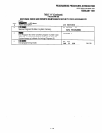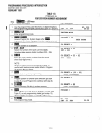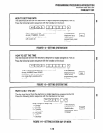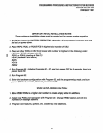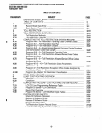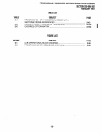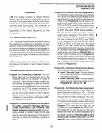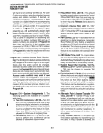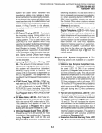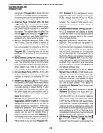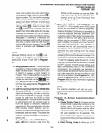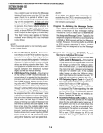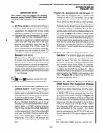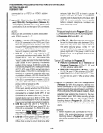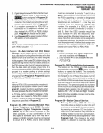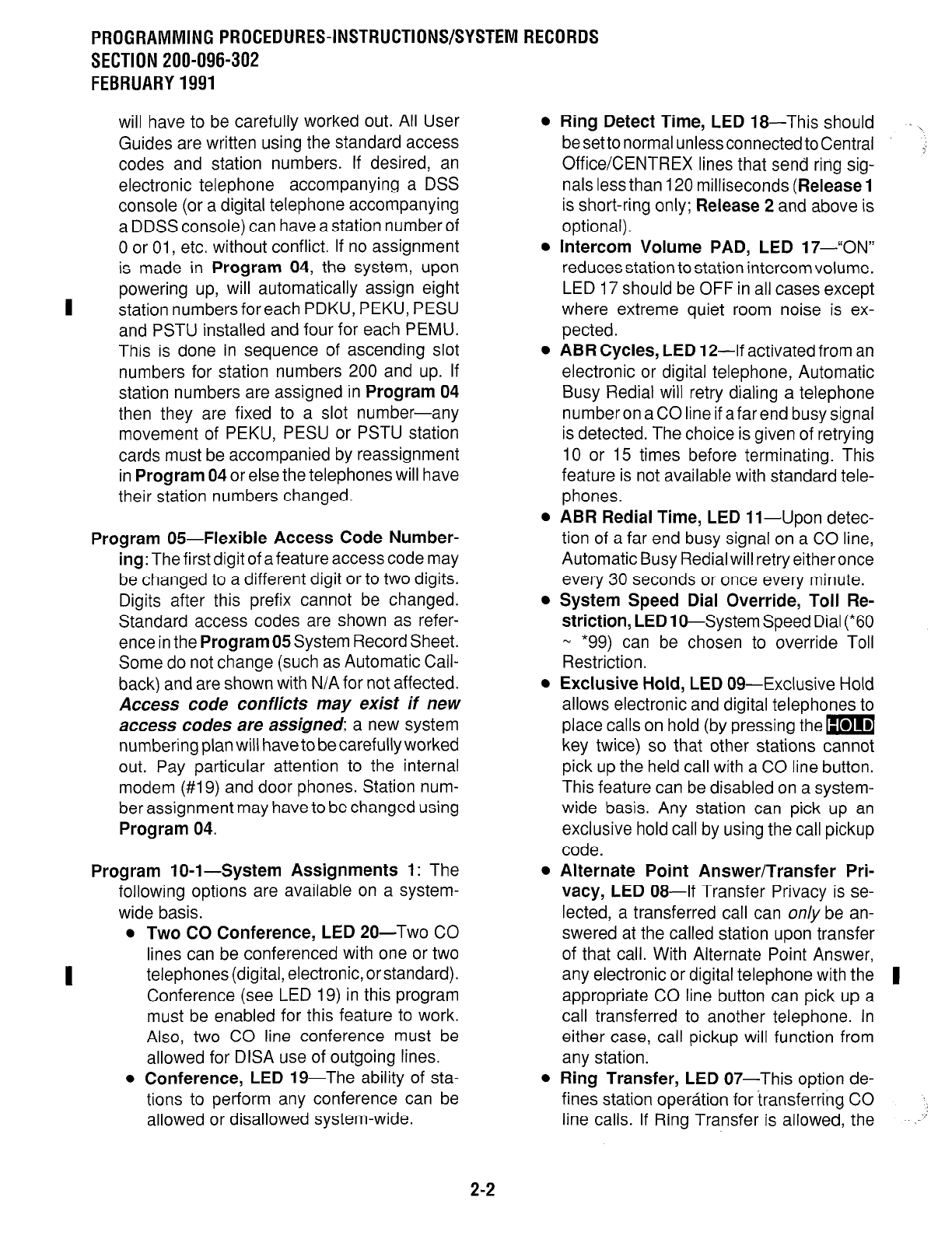
PROGRAMMING PROCEDURES-INSTRUCTIONWSYSTEMRECORDS
SECTION 200-096-302
FEBRUARY1991
will have to be carefully worked out. All User
Guides are written using the standard access
codes and station numbers. If desired, an
electronic telephone accompanying a DSS
console (or a digital telephone accompanying
a DDSS console) can have a station number of
0 or 01, etc. without conflict. If no assignment
is made in
Program
04, the system, upon
powering up, will automatically assign eight
station numbers for each PDKU, PEKU, PESU
and PSTU installed and four for each PEMU.
This is done in sequence of ascending slot
numbers for station numbers 200 and up. If
station numbers are assigned in
Program 04
then they are fixed to a slot number-any
movement of PEKU, PESU or PSTU station
cards must be accompanied by reassignment
in
Program
04 or else the telephones will have
their station numbers changed.
Program 05-Flexible Access Code Number-
ing:
The first digit of a feature access code may
be changed to a different digit or to two digits.
Digits after this prefix cannot be changed.
Standard access codes are shown as refer-
ence in the
Program
05 System Record Sheet.
Some do not change (such as Automatic Call-
back) and are shown with N/A for not affected.
Access code conflicts may exist if new
access codes are assigned;
a new system
numbering plan will haveto becarefully worked
out. Pay particular attention to the internal
modem (#19) and door phones. Station num-
ber assignment may have to be changed using
Program 04.
Program IO-l-System Assignments 1:
The
following options are available on a system-
wide basis.
l
Two CO Conference, LED 20-Two CO
lines can be conferenced with one or two
telephones (digital, electronic, or standard).
Conference (see LED 19) in this program
must be enabled for this feature to work.
Also, two CO line conference must be
allowed for DISA use of outgoing lines.
l
Conference, LED
19-The ability of sta-
tions to perform any conference can be
allowed or disallowed system-wide.
l
Ring Detect Time, LED
18-This should
be set to normal unlessconnected to Central
Office/CENTREX lines that send ring sig-
nals less than 120 milliseconds
(Release 1
is short-ring only;
Release
2 and above is
optional).
, ,
.::
l
Intercom Volume PAD, LED 17--“ON”
reduces station to station intercom volume.
LED 17 should be OFF in all cases except
where extreme quiet room noise is ex-
pected.
l
ABR Cycles, LED
12-If activated from an
electronic or digital telephone, Automatic
Busy Redial will retry dialing a telephone
numberonacolineifafarend busy signal
is detected. The choice is given of retrying
10 or 15 times before terminating. This
feature is not available with standard tele-
phones.
l
ABR Redial Time, LED
11-Upon detec-
tion of a far end busy signal on a CO line,
Automatic Busy Redial will retry either once
every 30 seconds or once every minute.
l
System Speed Dial Override, Toll Re-
striction, LED 1
O-System Speed Dial (*60
N *99) can be chosen to override Toll
Restriction.
l
Exclusive Hold, LED
09-Exclusive Hold
allows electronic and digital telephones to
place calls on hold (by pressing them
key twice) so that other stations cannot
pick up the held call with a CO line button.
This feature can be disabled on a system-
wide basis. Any station can pick up an
exclusive hold call by using the call pickup
code.
l
Alternate Point Answer/Transfer Pri-
vacy, LED
08-If Transfer Privacy is se-
lected, a transferred call can only be an-
swered at the called station upon transfer
of that call. With Alternate Point Answer,
any electronic or digital telephone with the 1
appropriate CO line button can pick up a
call transferred to another telephone. In
either case, call pickup will function from
any station.
l
Ring Transfer, LED
07-This option de-
fines station operation for transferring CO
line calls. If Ring Transfer is allowed, the
2-2



